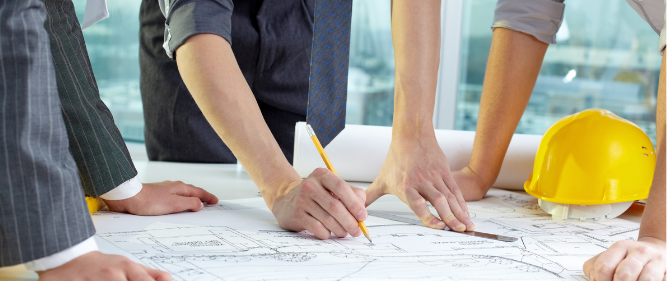Facilities that support process operations produce some of the most expensive and complex buildings in the world. And they run the gamut: “Process operations” can range from baking desserts such as cakes to processing raw meat for grocery operations, to manufacturing parts and components for U.S. Navy submarines.
So what do facilities across such diverse markets have in common besides being founded on their process? For one, the costly and painful struggle of getting the project started. Many times, important early stages are executed out-of-order or even too late. Let’s look at four recommendations that may seem obvious, but if executed properly, will take some of the pain out of beginning your next process facility.
1. Commence the process design earlier than you think you should
For many reasons — including equipment manufacturer delays, product updates, market shifts and more — the pace of the process design can lag behind that of the building. Once this occurs, the risk of significant consequences to bottom-line parameters such as building cost and delivery schedule is dramatically increased.
Virtually every discipline, from structural to plumbing, is affected in some way by each process decision. Like tipping over that first domino or dropping a rock into a pond, the ripple effect can extend well beyond where it began.
Ideally, you want to avoid modifying the building’s structure after shop drawings are approved, because the consequences of doing so are costly, time consuming and distracting. These added efforts absorb the design team’s availability, distracting them from moving the project forward. By having to re-work tasks that have already been completed, you sacrifice completing other scheduled tasks on time. While this may seem like an obvious strategy, the percentage of projects that are plagued by this condition is alarming.
2. Schedule and execute the site survey properly
The site survey is the first step in obtaining a geotechnical report and should parallel the process design effort. The site survey identifies and locates all seen and unseen obstructions (or tie-in elements) that the proposed facility will have to avoid or modify. If it is not executed properly, the building design and construction process will suffer as a result.
3. Obtain a comprehensive geotechnical engineering investigation
Before the site survey is complete, mobilize a geotechnical engineering firm to perform an investigation — keeping in mind that not all geotechnical engineering investigations are created equal.
Ensure the requirements and parameters of the geotechnical report are outlined early in the process. At a minimum, these should include:
- Testing for foundation recommendations (i.e., shallow, deep, etc.)
- Soil remediation recommendations, if applicable
- Allowable soil bearing pressure recommendations
- Settlement expectations
- Soil stiffness parameters
- Lateral earth pressures, including passive and active parameters
- Shear wave velocity testing
Shear wave velocity testing provides more reliable results for determining site classification when compared to more antiquated — and ultimately more conservative — test methods. Shear wave velocity testing can offer significant benefits (and cost savings) to your building’s design by providing a less conservative (and more accurate) analysis in determining site classification.
This is critical as site classification directly affects the Seismic Design Category (SDC) of your structure, which is responsible for governing various structural, equipment and equipment-support requirements. Not only does the SDC affect the structural design system, but it also influences how these related elements are implemented. The higher the SDC, the more significant the requirements, coordination and cost. It’s best to get in front of potentially costly items like this with appropriate planning.
4. Ensure coordination between architect, process designers and structural engineering team
The project’s architect is essential in planning life safety and building envelope decisions. After the process team develops schematic design concepts, the architect should resume their place as design coordinator; iterating room layouts and determining building materials, ceiling heights, elevation concepts, door types/locations and so on.
Once the architect has conceptualized a building’s length, width, height, and material of construction, he or she should seek the wisdom of the structural engineer to mature the concepts further. Back and forth they will go until building features such as column layout, wall thickness and roof elevation are agreed upon and coordinated with the schematic process design.
An important foundation for the rest of the project
At this point the building design and process teams rapidly design, evaluate and re-design the systems and components that make the structure a “process facility.” The evolution of this phase is well known and established, but it is critical to execute these other phases effectively first to minimize unwelcome surprises in the future.
Are you planning a new process facility? Wondering where to begin? Leave a question in the comments below or email me at foodforthought@stellar.net



